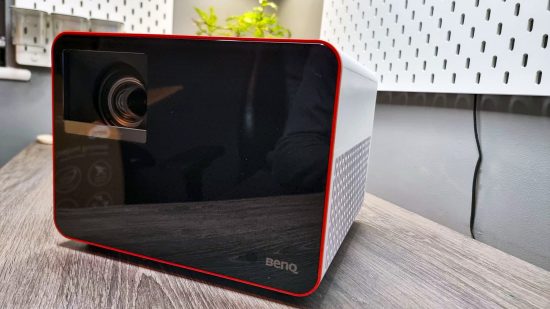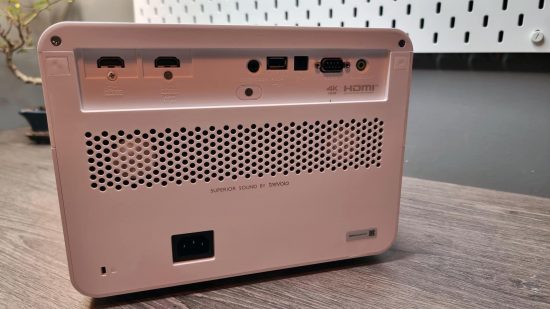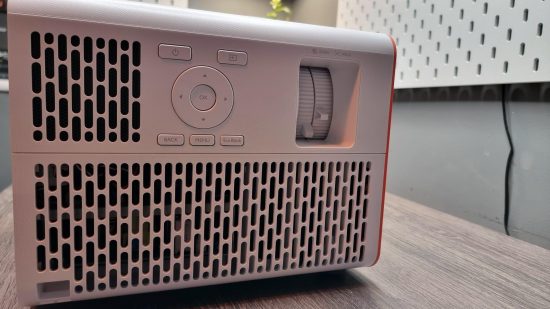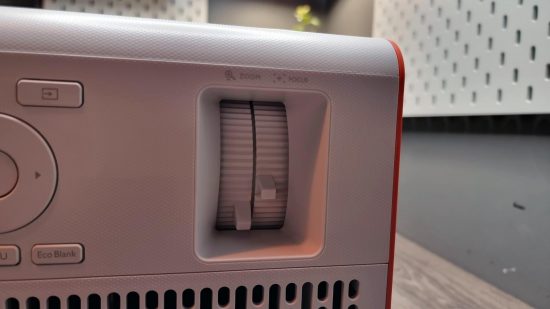Our Verdict
BenQ’s X3100i is one of the best gaming projectors out there right now. Its crisp resolution, expansive feature set, and top-tier image quality make it an absolute dream to game on. It’s not flawless however, some of the design choices are questionable, and its bulky size does make it challenging to mount on your ceiling. But, if you’re after the best gaming projector around it more than makes up for it in the areas that count.
- Easy to configure and setup
- Support for Android TV
- Impressive color accuracy, even on poor surfaces
- Only 60 Hz at 4K
- Incredibly pricey at full RRP
- Lacks HDMI cables
BenQ’s X3100i gaming projector is, in itself, a bit of a curious thing. If you ask any gamer worth their salt, whether a gaming projector would be their go-to pick for their primary gaming display, the answer would likely be a resounding “no” from the vast majority. Myself included.
The reason is they’ve always typically been sluggish, with slow response times, awkward configuration, chunky form factors, radically expensive, and with about as much clarity and color accuracy as a Zack Snyder flick. BenQ and many other manufacturers however are attempting to assuage the community into thinking otherwise, and with the X3100i, they might have finally nailed it.
I’ve been testing screens of all models and makes for the last eight years, and involved in the development of a few of them too, and with that experience, I can safely report that after reviewing the BenQ X3100i in detail over the last couple of months, this thing has very much surprised me.
Yes, this isn’t your traditional gaming display. Yes, you are going to need some significant real-estate space to take advantage of its true capacity, but oh boy are you in for a treat when you do.
Why you can trust our advice ✔ At PCGamesN, our experts spend hours testing hardware and reviewing games and VPNs. We share honest, unbiased opinions to help you buy the best. Find out how we test.
BenQ X3000i Specifications:
| Resolution | 3840×2160 |
| Contrast Ratio | 600,000:1 |
| Colors | 1.07 Billion |
| Life Expectancy | 20,000 – 30,000 Hrs (dependent on usage) |
| Response Rate | 4.2 – 16.7 ms (dependent on resolution) |
| Connectivity | 2x HDMI 2.0b (external), 1x HDMI 2.0b (internal), 1x USB Type A 2.0, 1x RS232 in, 1x 3.5mm Jack, Bluetooth 5.0, WiFi 8.02 a/b/g/n/ac (2.4G/5G) |
| Dimensions | 272 x 213 x 259mm |
| Weight | 6.8kg |
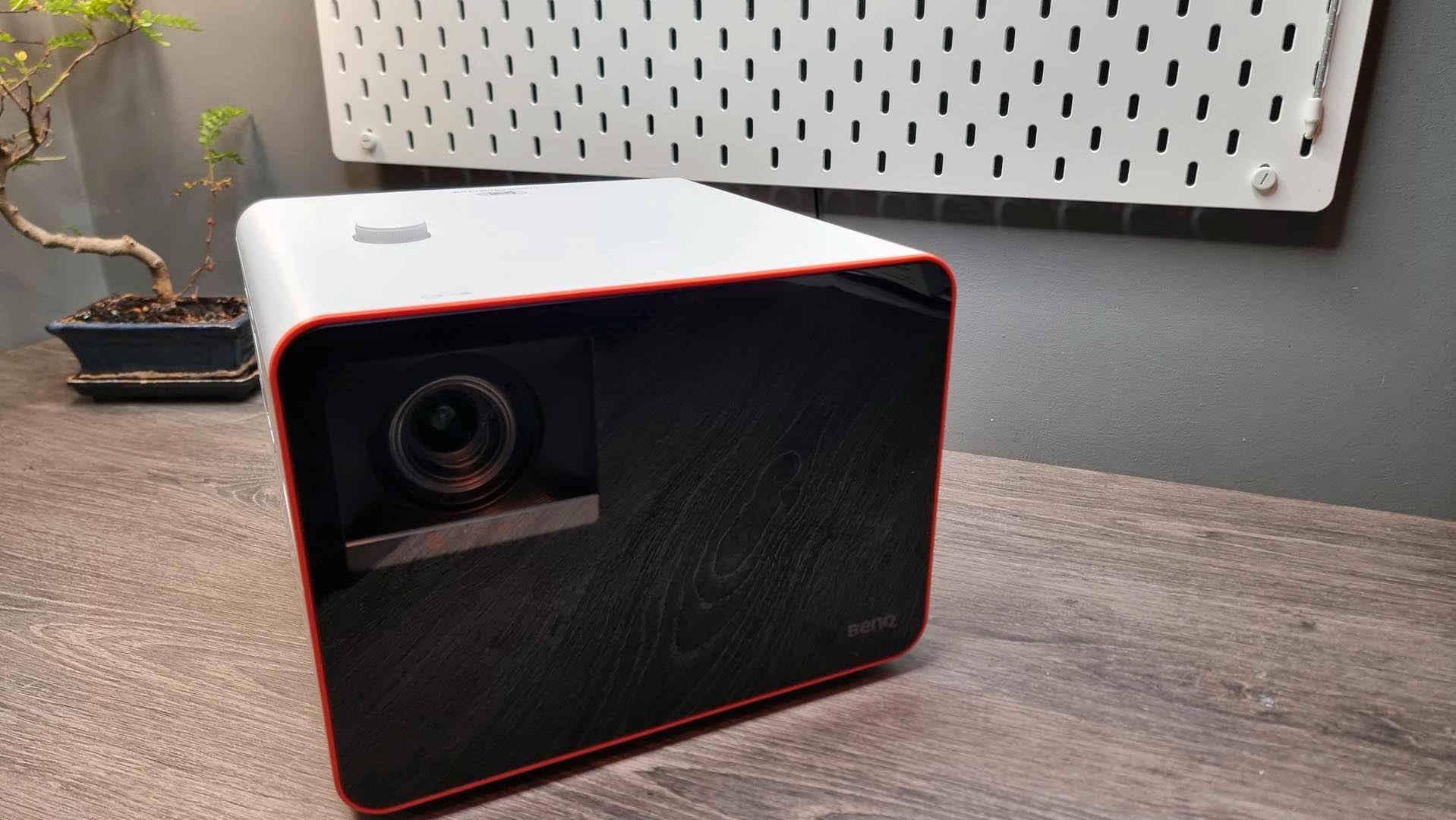
Design
Ok, let’s be clear here, the BenQ X3100i is a beefy unit, coming in at 272 x 213 x 259mm (10.70 x 8.38 x 10.20 inches) it’s not exactly a small box, even by projector standards. It lacks the slime-line look we’ve seen since the humble PJ’s conception that’s. Instead, we’re greeted with a chunky cuboid block, a bit of a beast. Now, admittedly it has to be, to pack in all that hardware and cooling support, or at least that’s the assumption, but still, it makes it difficult when it comes to considering where exactly you’re going to place this thing to get the best picture out of it.
Why? Well if you want to mount the Benq X3100i on your ceiling, you can, it is possible. But given its girth, if you’ve got low ceilings, or are particularly tall, it represents a potential hazard when you’re walking about the room. The second problem lies with where everything is located. I/O ports, cables, and tuning dials are, well, all over the place. The lens-shift dial is right on the top of the unit. The focus rings are on the sides (handy enough), next to an OSD menu solution, but take a glance at the rear I/O and you’ll notice the kettle lead for the power supply is located on the bottom, with the rest of the ports (HDMI, SPDIF, USB etc) all at the very top.
If you do ceiling mount it, because that lens shift dial is on the “top” of the X3100i, you effectively have to flip the entire thing (which again it has support for, in fact, this is the only way to ceiling mount it), but once more you’re stuck with that rear I/O problem. Plug in more than one or two devices, plus the kettle lead, and immediately you’re going to have ugly cables dangling from your ceiling, requiring some smart cable management to tidy it up. Less than ideal. The best place for the X3100i is on a shelving unit on the opposite side of the room to your projection screen.
Dimension issues aside, the X3100i is a solid piece of design. It’s crisp and clean. There’s a nice mix of white and black plastics, cuboid monogram patterns on the front, that stunning 4K lens, and of course good ventilation all around. Its subtle design choices make it look and feel like a premium unit, without adding excess weight to it, and it shows. There were some minor panel-gap issues on my first review unit, although this has been chalked up to shipping errors, and my replacement unit was entirely fine. Once raised, BenQ identified the problem and quickly remedied it.
As I mentioned, there’s also plenty of ventilation on this thing too, with multiple mesh cutouts and fans throughout the projector’s shell, none of which are particularly audible when in use, which is honestly a huge win.
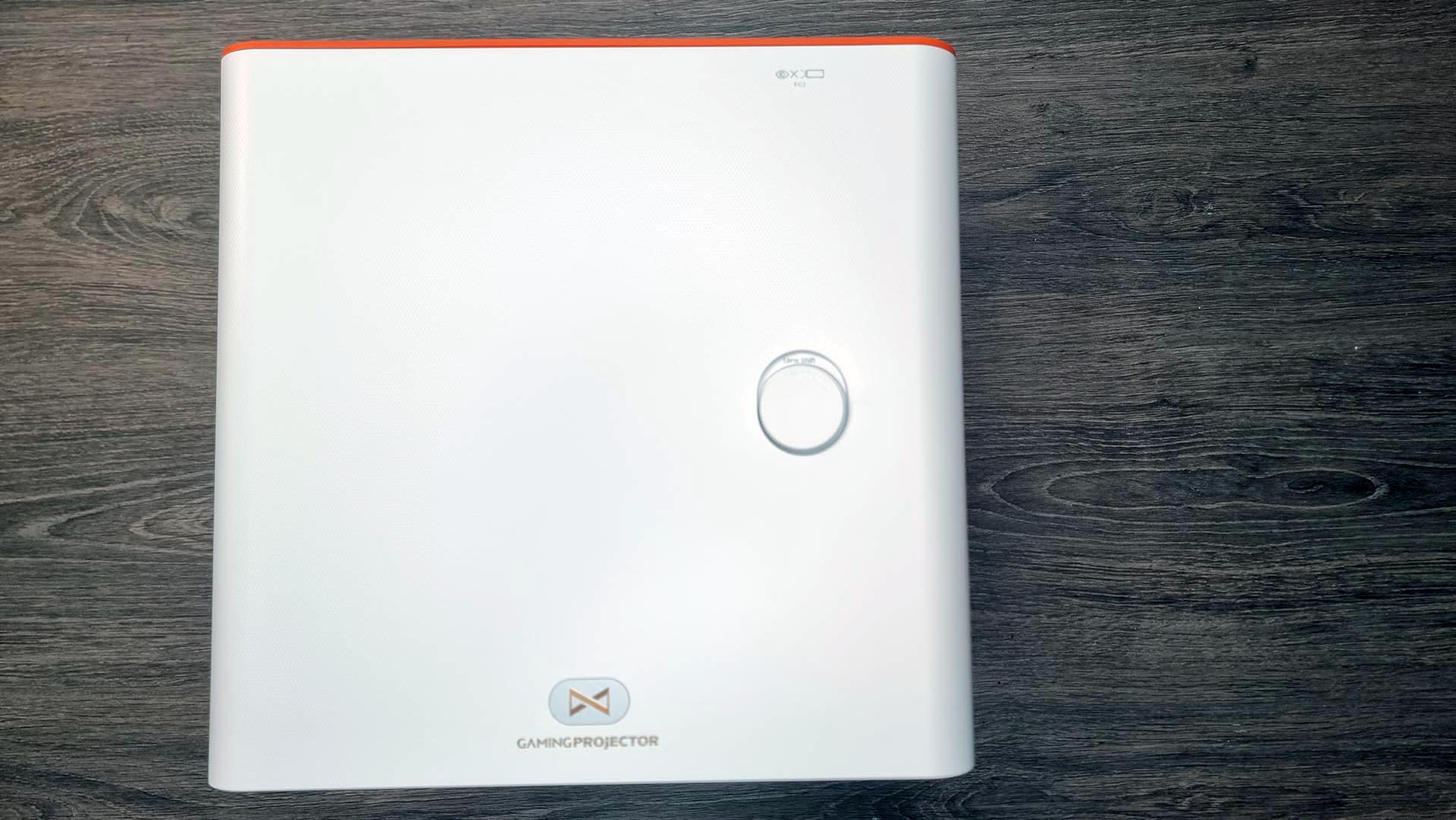
Features
So then, let’s talk baseline stats. The X3100i packs in a 4K HDR 4LED lens, that produces 3300 lumens, with a 600,000:1 contrast ratio. It’s effectively equivalent to a standard 10-bit display, (packing in 1.07 billion colors), and has an expected operating life of up to 20,000 hours (2.28 years non-stop usage) in its normal mode, or up to 30,000 hours in its various eco modes.
For the more monitor-savvy individuals out there, the big talking point is going to be the resolutions, associated “refresh rates” and the input lag that comes along with it. You can effectively run the X3100i at three separate resolutions, with varying input lag latencies, and framerates for all of them. You, of course, have the HDR showpiece with 4K at 60 fps with a 16.7ms response time, then there’s 1440p at 120Hz, with an 8.3ms input latency, or 1440p 60Hz, with 16.7ms, and lastly, three separate 1080p resolutions, clocking in at 240, 120, and 60 Hz respectively, again featuring latencies of 4.2ms 8.3ms and 16.7ms as well.
There’s also some smart integration with an Android TV box you can embed directly into the unit if you want to turn it into a smart projector more akin to a TV than a traditional PJ or even a gaming monitor. You do that by removing the top panel, and then installing the included Android TV dongle into an internal HDMI and Micro-USB cable simultaneously. There’s also a remote to help with control as well, however, you can’t remotely control the focus or shift dial sadly. They’re not motorized.
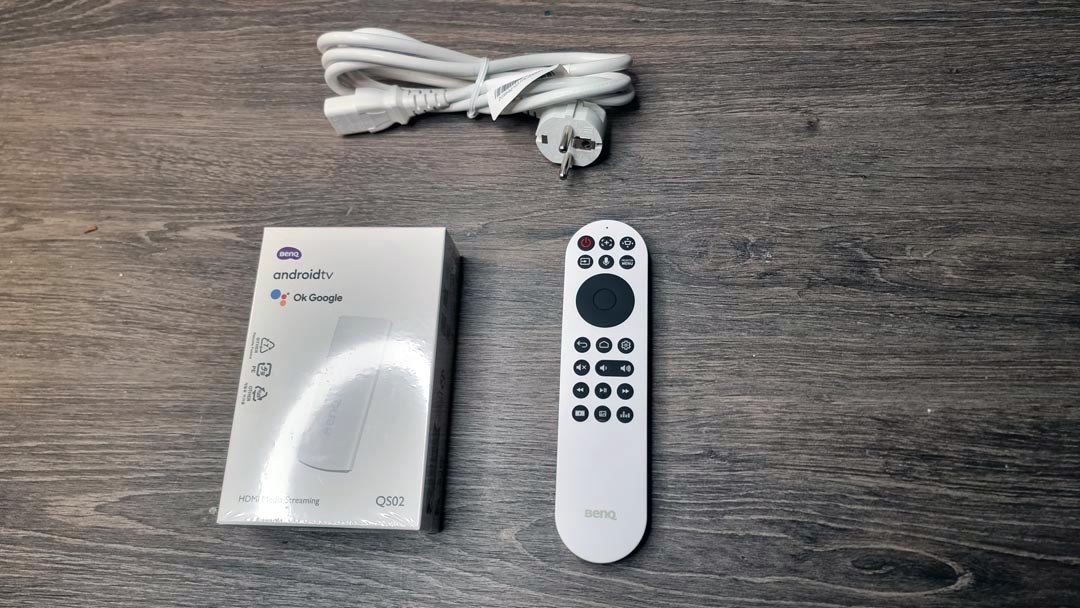
Performance
So then, what’s it like to use the X3100i? Honestly, for those uninitiated in the world of gaming projectors, it’s an absolute treat. Chuck this thing on a 100-inch screen, or even a white wall, and you’re going to have a heck of a time in-game. The 4K resolution is super crisp, it doesn’t matter if you’re playing Farmville, Total War, Elden Ring or just binge-watching YouTube content.
I tested the X3100i across several titles (Stardew Valley and Total War being the primary ones), at a throw distance of four meters, and was never not impressed during the whole procedure.
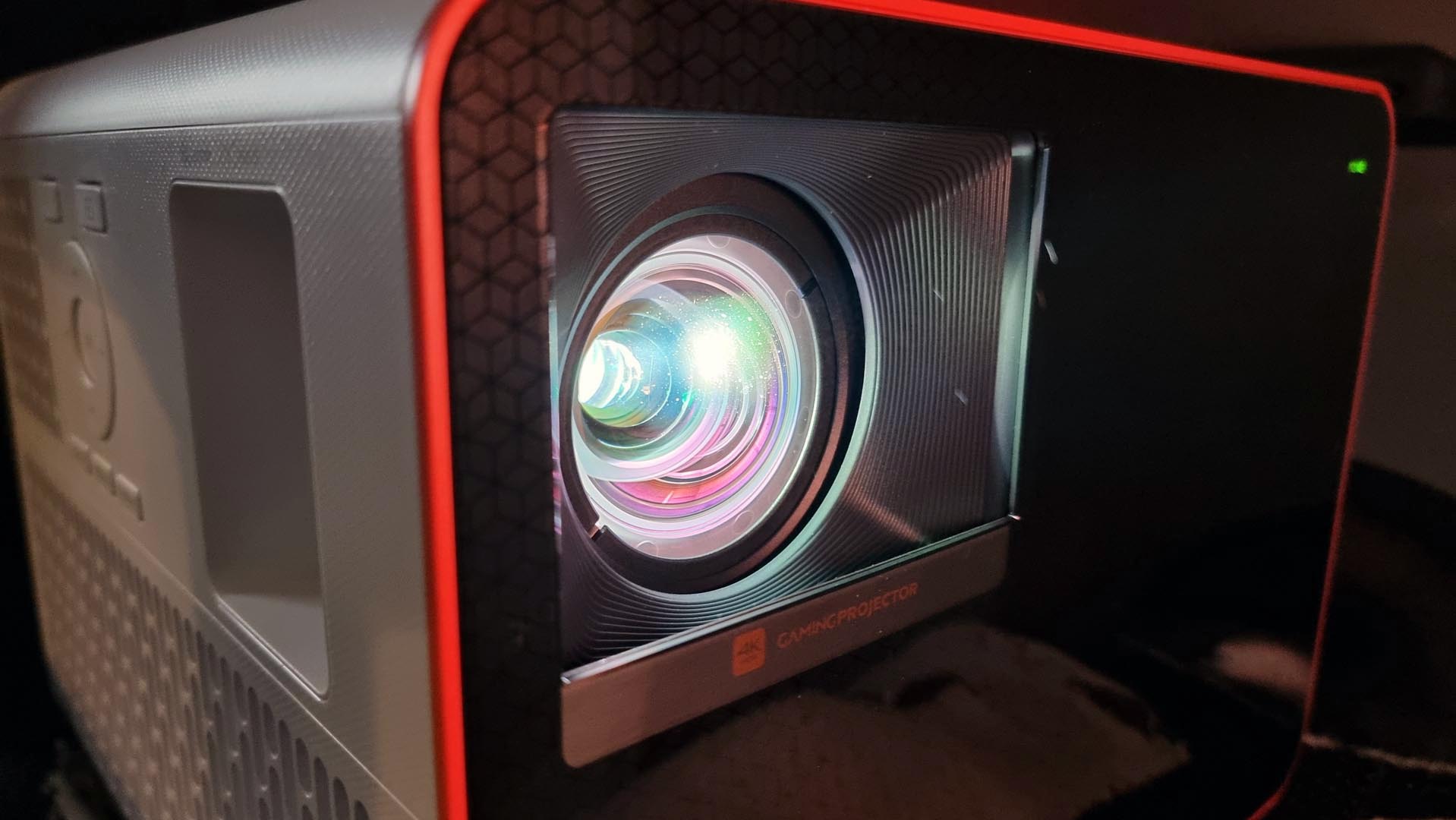
When dialed in, color accuracy was incredibly impressive, vibrant, and punchy, even without HDR mode enabled in Windows, and there’s an absolute smoothness to the X3100i thanks to the fact that it’s impossible to get ghosting on it. This does come with caveats, however. To get the most out of it you’re going to want a fully dark room to take advantage of it. It’s effectively all about where you use this, and using it in the day, although possible, doesn’t pack the same vibrancy as if you were to do the same on a desktop monitor. It just can’t match the vibrancy of an LCD. That’s also a particular problem when you come to darker scenes and entertainment, as you just can’t get the same depth on the blacks as you would say with an OLED display or even a solid IPS or VA unit.
Input lag, even at 4K at 16.7 ms never felt particularly noticeable. Yes, you’re not going to be topping scoreboards in Valorant with this thing, compared to something like a 120 Hz OLED with 0.1ms response times, but it’s still a smooth and forgiving experience, particularly if you’re playing less intense RPGs or RTS titles on your living room consoles or gaming PC.
And that’s the thing. You can’t look at BenQ’s X3100i like you would a typical gaming monitor. Comparing it to something like an Alienware AW3423DWF OLED is a bit of a trap. They both serve very different purposes and provide very different gaming experiences. In BenQ’s case, it’s designed for that lazy, sit-on-the-couch, gaming-with-buddies scenario, or binge-watching content. You want the best specs because you want the best entertainment, but you’re not here to competitively do anything. The ergonomics are all wrong for that, the screen’s still too far away, and the input lag is too high, but that’s fine. That said, you will appreciate the hyper-rich detail and color, and having that (let’s be honest fairly average) latency won’t be enough to break your immersion in 99% of games anyway.
Still, the best gaming monitors and TVs out there provide far more versatility and arguably better value for money. Additionally given what size options we have available these days, particularly with the likes of Samsung’s Ark devices, and some of the phenomenal sizes of TVs now available, at significantly less cost, it’s a challenging recommendation nonetheless.
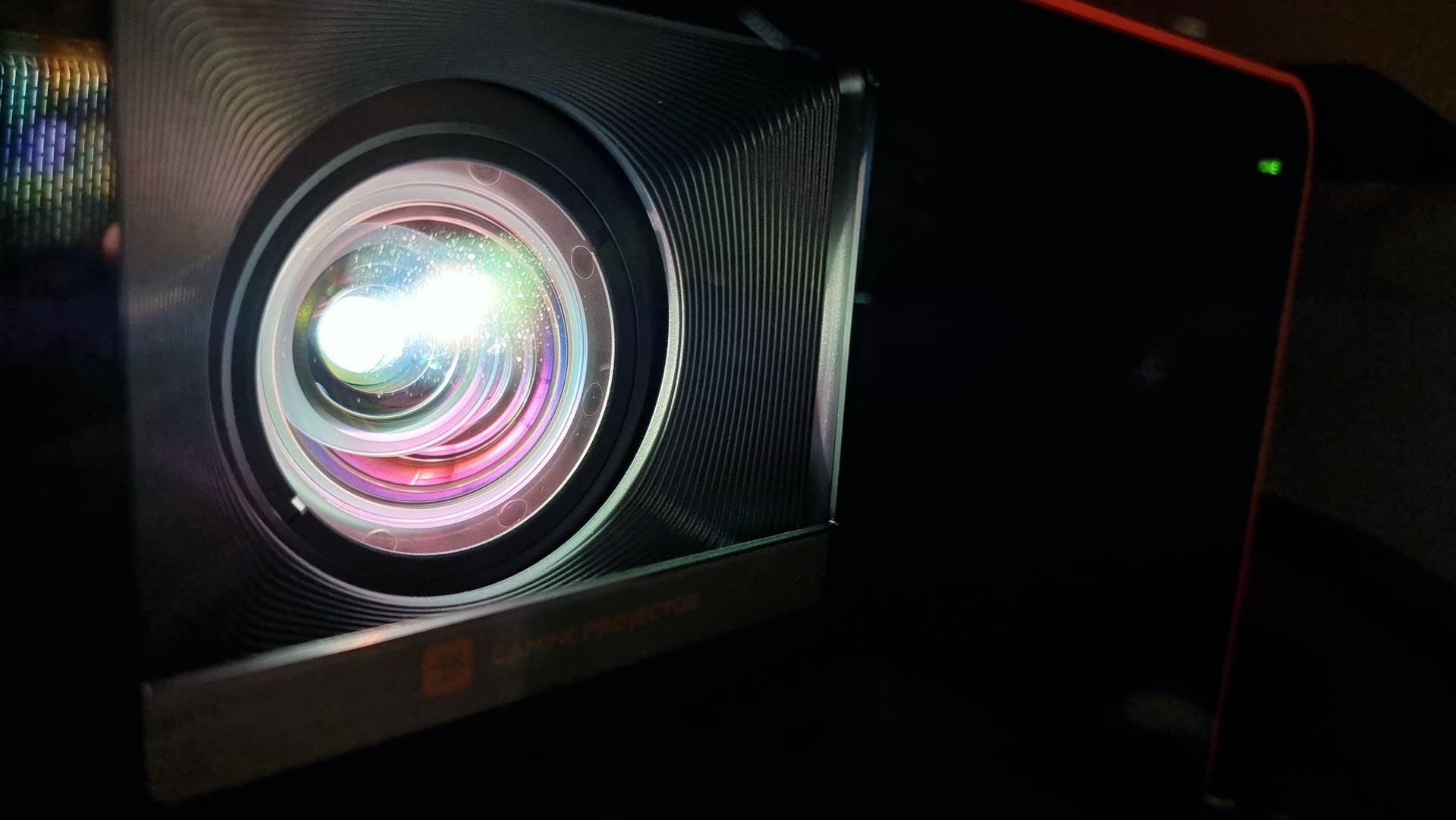
Should You Buy?
- Yes: If you want one of the best gaming projectors out there
- Yes: If you’re looking for something you can stream content to as well
- Yes: If you’re more of a casual gamer than a pro gamer
- No: If you’ve got limited space at home
- No: If you want to ceiling mount it
In the world of gaming projectors, the BenQ X3100i is a king amongst kings. Despite its awkward dimensions and I/O design flaws, Its potent color accuracy, comfortable latency, and impressive resolution ensure it’s a gaming experience you’ll never forget.
That said, this is a luxury pick. A purchase you’re buying because you already have a good gaming setup for your PC, and you want something you can expand your gaming setup or room into. This isn’t your next daily driver, but then it isn’t designed to be.
Alternatives
If you’re solely thinking about buying a solid gaming projector, the two biggest counter-arguments against the BenQ X3100i are going to be its price and its size. If the size isn’t that off-putting and you like what BenQ has done here but the price is too much, its predecessor the X3000i is available fairly regularly at $300 cheaper than this current unit, even more during seasonal sales. Albeit that comes at the cost of slightly lower lumens and contrast ratios respectively.
Alternatively, something like BenQ’s TK700STi is even more affordable and features similar gaming modes and response times too. Alternatively, you could pick up Epson’s Home Cinema 3200 4K 3LCD projector for closer to $1200 but with a far more slimline design (and admittedly it doesn’t quite have the same picture punch as the X3100i)
If you’re not sold and want a monitor pick instead, the Alienware AW3423DWF OLED is half the price and a considerably more competitive allrounder.
Verdict
It might be only a slight upgrade on the X3000i BenQ launched back in 2022, but the X3100i still ticks all the right boxes and produces one of the best gaming projector experiences money can buy. It’s not flawless, its bulky size and odd I/O layout makes it challenging to ceiling mount, so definitely consider that before you decide to pull the trigger.
